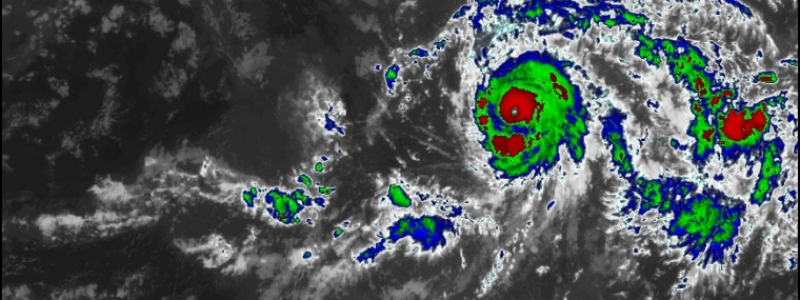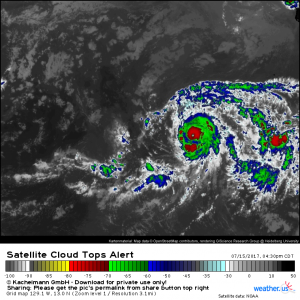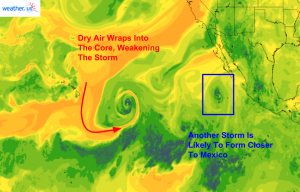
Hurricane Fernanda Continues To Roll Across the Eastern Pacific
Hello everyone!
With generally quiet weather across the US, today’s blog will take a quick look at an impressive storm just south west of the US, in the Eastern tropical Pacific ocean.
Hurricane Fernanda has put on an impressive show over the past few days, rapidly intensifying from a low level Category 1 hurricane to a strong Category 4 hurricane in a mere 36 hours. Its intensity has held steady in the past day or so as it cycled through its first inner core with a larger one replacing it. These so called Eyewall Replacement Cycles (EWRC’s) are known to occur in strong hurricanes and can briefly cause weakening before the new inner core takes over.
Fernanda is looking strong on satellite imagery this afternoon. Curved bands of wispy white clouds are extending far from the center in all directions, signaling that the storm is successfully venting hot air from the top of the storm. There is a strong and consolidated ring of intense thunderstorms surrounding a distinct eye, another sign of a strong storm. The latest analyses peg Fernanda’s peak winds to be around 130 mph with higher gusts. So what does the future look like for the storm?
The next few days look good for the storm as it moves over warm waters and through a relatively favorable environment. By day 5, however, it will begin to round the base of a large ridge of high pressure located off the California coast. As a result it will begin to move northward into drier air and over colder waters. As a result, it should begin to weaken as it moves north of Hawaii.
Meanwhile, a center of low pressure currently located south of Mexico is likely to develop into a tropical storm as it moves northeast off the Mexican coast. It is not expected to be a major storm but it could bring some bouts of heavy rain to the Mexican coast if it drifts close enough.
Over in the Atlantic, the tropics are still fairly quiet and dominated by dry air. A very weak tropical storm could form near Barbados in a few days but it is expected to remain weak and shouldn’t impact us here in the US.
-Jack Sillin













